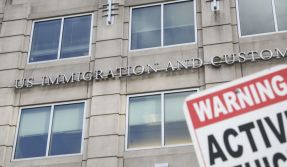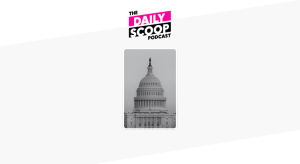U.S. Customs and Border Protection drones spent more than 80 percent of their time in border and coastal areas, according to a new report from the Government Accountability Office.
In the report, GAO researchers looked at flight hour data for CBP drones, or unmanned aerial systems, from fiscal year 2011 to April 2014. They found that roughly a fifth of the drones’ flight hours took place in restricted or foreign airspace — perhaps as a result of an equipment malfunction — or were used for training, transit and disaster missions.
The report, released Tuesday, evaluates a Department of Homeland Security review on whether its border drone program complies with privacy laws and civil liberty standards, and whether the drones’ activities were limited to border areas. Researchers looked not only at the DHS review, but they also reviewed privacy laws and interviewed DHS staff for the report.
GAO researchers note that DHS drones aren’t restricted to border areas by law, though they are limited by Federal Aviation Administration requirements and CBP policies.
The report comes amid ongoing uneasiness about the effect that drones could have on privacy. Indeed, Rebecca Gambler, director of the GAO’s Homeland Security and Justice unit, said in a cover letter for the report there have been “questions regarding the scope of CBP’s authorities to collect and use aerial surveillance.” However, the GAO report noted CBP has measures in place to help make sure its program observes privacy rules.
“DHS’s review contains information on CBP procedures on collecting, retaining, storing, and disseminating images from UAS, among others, to help ensure compliance with privacy and civil liberty laws and standards,” according to the report.
While the DHS review did not elaborate on how it has developed a written institutional framework to protect privacy, the GAO report did find that CBP has or plans to issue such policies.
“As highlighted in the report, U.S. Customs and Border Protection, Office of Air and Marine (OAM), operates their unmanned aircraft systems with an oversight framework and procedures that help ensure compliance with privacy and civil liberty laws and standards,” CBP told FedScoop in an email. “The UAS provides a vital layer in CBP’s border security strategy – operating in a dynamic environment – adjusting coverage according to emerging trends and the needs of CBP personnel on the ground, to include along the southwestern border of the U.S. Equipped with state-of-the-art sensors and day-and-night cameras, the UAS provides real-time images to commanders and frontline agents to more effectively and efficiently secure our nation’s borders.”
CBP is tasked with protecting U.S. borders and hedging terror threats and illegal drug imports. Its Office of Air and Marine provides nine drones to patrol the border.
House Committee Report 113-91 tasked GAO with evaluating the DHS review. GAO received a copy of the department’s review, conducted by the Office of Civil Rights and Civil Liberties and the Privacy Office, in June to evaluate, and the agency presented its findings to congressional offices at the end of August.
The GAO did not make any recommendations in this report nor did DHS submit an official response.







